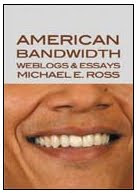You’re to be forgiven if you glanced at the latest cover of Vanity Fair and thought Hollywood culture was having a flashback, to about 1957.
That’s the inescapable takeaway from the Annie Leibovitz cover portrait, one of those huge fold-out gatefold affairs that VF runs every so often (probably after firing X number of interns to make room in the budget). The cover lines splayed across a recumbent Kristen Stewart tell the story: “A New Decade, A New Hollywood!”
Sitting for the portrait are what we’re told is the new doe-eyed, tousled-haired ensemble of power players in a Hollywood undergoing one of its periodic generational morphings. There’s Stewart, Carey Mulligan, Evan Rachel Wood, Amanda Seyfried, Rebecca Hall, Mia Wasikowska, Anna Kendrick, Emma Stone and Abbie Cornish, the nine actresses that VF has apparently defines as the new It Girls.
◊ ◊ ◊
It’s a bit of a stretch for at least two reasons. This isn’t the first time in the last three years that VF has coronated children of a lesser candlepower this way. Seyfried and Stewart made the cover back in long-ago August 2008, in a similarly-themed cover tease (“Hollywood’s New Wave”). Coming so soon after that investiture, it’s a little hard to see this as much more than canny marketing, and a shameless cheesecake pitch for newsstand sales in a sour economy.
And then there’s the other factor. It’s suspect enough leaving out the young men who are making a difference in Hollywood. Nothing like a little reverse gender bias to get people talking. The March VF cover is just as conspicuous for who else it leaves out. Gabourey Sidibe, Zoe Kravitz, Zoe Saldana, Jurnee Smollett, Jessica Alba, Lauren London. Women of color, all. Among others.
Dodai, writing at Jezebel, picked up on it: “VF's ‘Young Hollywood’ is much like the golden age of Hollywood: There was a fetishization of the lithe, gorgeous, virginal ingenue, whose virtues and ambitions were pure, and therefore desirable. You either wanted to be her or sleep with her. … her "All-American" good looks meant that she was a WASP or a fresh-faced farmgirl. Certainly not black, definitely not fat, and never both. Looking at the March 2010 issue, has anything changed? Even Evgenia Peretz's descriptions of the actresses — 'Ivory-soap-girl features,' 'patrician looks,' 'dewy, wide-eyed loveliness' — reinforce the idea that a successful actress is a pretty, aristocratic-looking (read: white) actress.”
Morninggloria, in Jezebel: “Caption for the cover shot: ‘You can’t join our sorority.’”
◊ ◊ ◊
You want to cut VF a break. After all, you only have to look back to their Hollywood issue of 2008 to see how VF can think outside the box: America Ferrara and Zoe Saldana graced that cover (inside the first fold, and not immediately visible on the newsstand, of course).
But as they say, that was so last century. Ironically, though, the real-life prospects for on-screen diversity have changed somewhat since 2008. It's curious that VF couldn’t find room for Sidibe, who’s up for an Oscar next week for her work in "Precious"; the Breck girls on the current VF cover will no doubt walk the red carpet on Oscar night ... probably right to their seats in the audience, and nowhere else.
Saldana, a solid actress with staying power, is one of the standouts in “Avatar,” the groundbreaking James Cameron film that's performed the challenging trick of both Changing the Way Movies Are Made and putting a$$e$ in theater seats. No room for her to repeat on the cover, apparently.
It’s just so inconsistent, so predictable, and predictably retrograde. DearConnie, writing in the Seattle Examiner, understands: “As someone of multirace who reads Vanity Fair, gotta say I was pretty taken aback by the fact they didn't even try or realize what message they were sending: Hollywood for the next decade looks like Hollywood since its inception.”
“A dream is a wish your heart makes,” goes the lyric from Disney’s “Cinderella.”
Maybe a monochromatic magazine cover is a wish a magazine makes.
Monday, March 1, 2010
Subscribe to:
Post Comments (Atom)








No comments:
Post a Comment